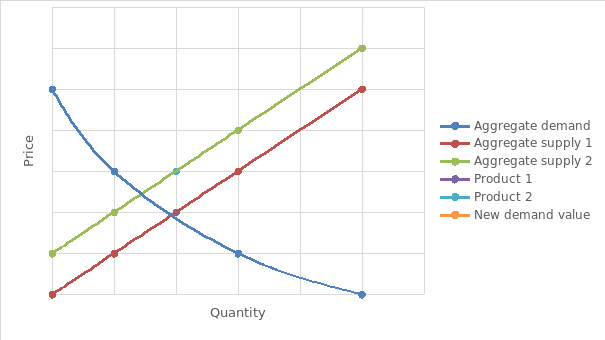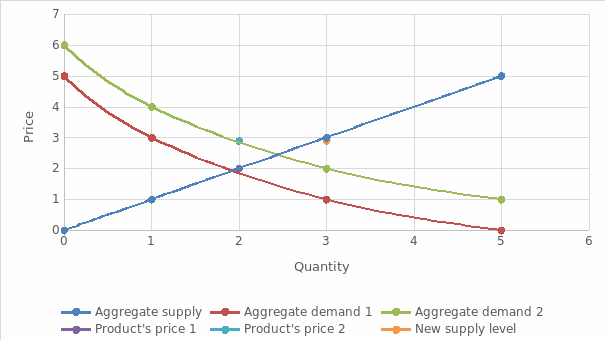Introduction
The consumption of goods is a complex process that includes many variables influencing it. The customer’s decision towards one or another product differs depending on his or her level of wealth, the increase or decrease of the inflation, and the level of interest rates. All of the mentioned factors may influence the aggregate demand, increasing the current prices. In addition, the goods’ price may differ from one dealer to another, depending on the percentage of the commission they pay to the manufacturer of the product. Thus, the price and the availability of the goods mainly depend on various external factors, starting from production costs and ending with an economic situation in the given country.
Price Discrimination and Dealers’ Interest
Product prices may differ depending on the interest the dealer pays for distributing the product, as well as the demand for the product, the volume of its supply, and the existence of price discrimination. First of all, the dealers are given a percentage of commission by the manufacturers to sell their products (Banks GS-7). Since every dealer wants to profit from the goods he buys from a manufacturer, he dynamically increases or decreases the price of the product. A good depiction of this situation is the difference in the cost of the same vehicle in various car dealerships. In addition, price discrimination is becoming more and more widespread, and personalized pricing is being implemented in various online services (Borgesius and Poort 2). Thus, for example, Mac users were shown higher hotel prices on Orbitz service (Howe). The mentioned aspects show how price may vary from customer to customer or from dealer to dealer during the same period.
Aggregate Demand and Aggregate Supply
The second factor that may cause changes in the goods’ cost is the demand for a product combined with the amounts of its supply. Since both aspects may disproportionally vary during different periods, the dealer often changes the price according to the current situation. For instance, if an average consumer’s salary has increased, he is “willing to spend more money” (Owoeye 9). This results in a higher demand for the product; however, if a seller is unable or is not willing to provide a bigger volume of supply, the desired product will remain inaccessible (Owoeye 9). Its price will dynamically grow according to the current demand. In addition, a growing demand without increasing supply may result in a product’s deficit. Such is the case of ever-growing video card prices – the demand for them has skyrocketed since 2019; however, the manufacturers are still abstaining from more significant production volumes (Allan). Thus, higher demand and average customer welfare may result in product shortage without proportional supply from the seller.

The provided diagram shows how the demand for the product proportionally decreases with the increase in the products’ cost, given that the quantity of output remains the same.
Cost of Production
Finally, the goods’ price may depend on the costs of factors of production and the production itself; thus, in case of the growth in their price, the goods price will grow as well. Production costs and, therefore, an aggregate supply is affected by such factors as taxes, resource costs, regulations, etc. (Tucker et al. 384). “Increased government regulatory compliance costs or wage rises far in excess of labor productivity, or raw materials and energy costs increases would all lead to increased production costs” (Tucker et al. 384). The author of the previously mentioned source offers Australian inflation at the beginning of the 70s as an example; a serious increase in commodity prices led to high inflation (Tucker et al. 384). As a result, an increase in production costs affects the aggregate supply, leading to a decrease in the level of production.
Factors of Production
At the same time, the factors of production conduct the cost of production itself, thus influencing the aggregate supply. There are four basic factors of production: land, labor, capital, and entrepreneurship (Usmani and Shaikh 49). Each one of these factors has its own price, which can increase or decrease due to various economic conditions. It is possible to assume that the deficit of one of these four factors of production may trigger the increase in their cost. For example, the land, or the natural materials used for the production is a resource with an inelastic supply (Usmani and Shaikh 49). What this means is that in case of high demand, the additional land cannot be produced (Usmani and Shaikh 49). As a result, the cost of this factor of production will grow as a response to the high demand from the manufacturers. Therefore, the deficit of factors of production leads to the increase of their price and hence to the decrease of aggregate supply.

The provided diagram illustrates how the aggregate supply of the product increases due to the stagnating demand along with the increasing price (due to the increase in the factors of production cost). Since the demand for a product with an increased price remains the same, the seller wants to increase its quantity.
Conclusion
Considering all the prior information, it is possible to conclude that the process of goods’ production consists of many various aspects that have a direct influence on a future product’s price. Moreover, the demand for the product, formed by the quality of the product and levels of customers’ welfare, also has a strong impact on the market price of the product. The economic relations between a dealer and a manufacturer lead to the tangible variety of prices for the same product. Thus, the goods’ price may vary on different or on the same time period.
Works Cited
Allan, Darren. “Nvidia CEO Says There’s No Magic Cure for GPU Shortage That’ll Last Until 2023.” Techradar, 2021, Web.
Banks, Theodore L. Distribution Law: Antitrust Principles and Practice. Wolters Kluwer Law & Business, 2021.
Borgesius, Zuiderveen F., & Poort, Joost. “Online Price Discrimination and EU Data Privacy Law.” Journal of Consumer Policy, vol. 40, no. 3, 2017, pp. 347–366.
Howe, Neil. “A Special Price Just for You.” Forbes, 2017, Web.
Owoeye, Erica. Understanding Supply and Demand. Cavendish Square Publishing LLC, 2019.
Tucker, Irvin B., et al. Economics for Today. Cengage Learning Australia, 2018.
Usmani, Gulnawaz, & Shaikh, Aftab A. Basic Concepts of Demand and Production – for the Beginners. Idea Publishing, 2020.